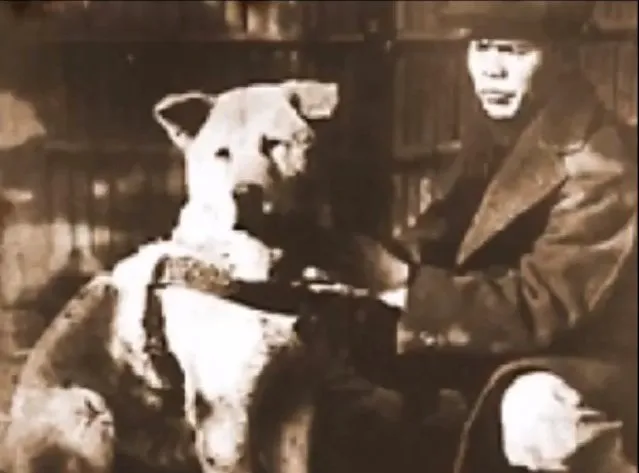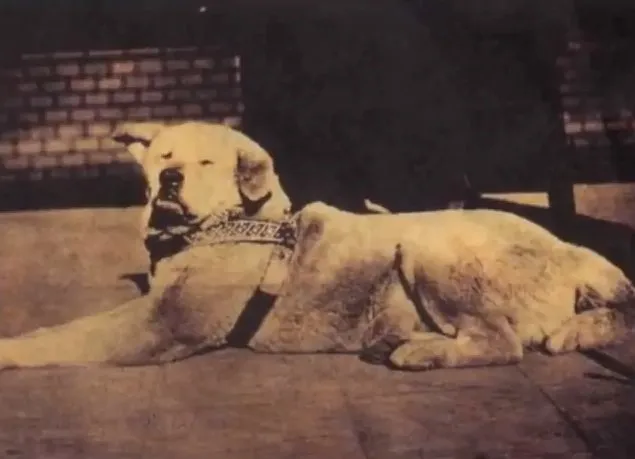The tale of Hachiko, the incredibly loyal Akita dog, has captivated hearts worldwide, inspiring countless stories, monuments, and, most notably, a famous japanese loyal dog movie. If you’ve ever heard of a dog whose unwavering devotion transcended even death, chances are you’ve encountered the legend of Hachiko. This remarkable canine became a national hero in Japan, a symbol of profound loyalty, and his story continues to resonate deeply with dog lovers and moviegoers alike. From his bronze statue gracing Shibuya Train Station in Tokyo to the poignant American film adaptation “Hachiko – A Dog’s Tale,” his legacy is etched into popular culture. But what is the true story behind this celebrated hachiko dog movie true story, and why does it continue to move us so profoundly? Prepare to be touched by the amazing, real, and heartbreaking journey of Hachiko, a dog whose love knew no bounds.
The Origin of a Legend: Hachiko’s Early Life with Professor Ueno
Hachiko’s story began in Odate City, within Japan’s Akita prefecture, where he was born on November 10, 1923. He was a purebred Akita, a magnificent breed known for its loyalty and dignified presence. Fate intervened when Hidesaburō Ueno, a professor of agriculture science at The University of Tokyo, sought a purebred Akita puppy. One of his students helped him acquire the young Hachiko, who embarked on a challenging 20-hour train journey to Tokyo. Upon arrival on January 15, 1924, the puppy was frail, initially believed to be lifeless. However, Professor Ueno and his partner, Yae, nursed the small Akita back to health over the following six months, forging an unbreakable bond.
Professor Ueno named his new companion Hachi, meaning “eight” in Japanese—a number considered lucky. Hachi quickly became more than just a pet; he was a beloved member of the family, treated by the professor as his own son. Their connection was immediate and profound, characterized by deep affection and an almost inseparable daily routine. Each morning, Hachi would accompany Professor Ueno to Shibuya Train Station, seeing him off to work. In the afternoon, with a loyal heart, he would return to the station, eagerly awaiting his master’s arrival. This simple, beautiful ritual exemplified their extraordinary bond.
 Hachiko with his best friend and owner, Professor Ueno
Hachiko with his best friend and owner, Professor Ueno
An Unwavering Vigil: Hachiko’s Decade of Devotion
Tragedy struck abruptly on May 21, 1925, a mere sixteen months after Hachiko joined the Ueno household. As was his custom, Hachi sat patiently at Shibuya Station, anticipating the return of his cherished friend. However, Professor Ueno never arrived. He had suffered a fatal cerebral hemorrhage while at work, passing away suddenly at 53 years old. The professor’s death left Hachiko without his beloved owner, yet it did not diminish the dog’s profound loyalty.
Hachiko moved in with Kozaburo Kobayashi, a former gardener for the Ueno family, whose home was conveniently close to Shibuya Station. Despite this new arrangement, Hachiko’s heart remained at the train station. For the next ten years, every afternoon, precisely when Professor Ueno’s train was due, Hachi would appear at Shibuya Station. He would sit for hours, patiently scanning the faces of disembarking passengers, a silent sentinel waiting for a reunion that would never come. His unwavering vigil became a poignant symbol, a testament to the loyal dog story that would soon capture the nation’s attention.
Initially, Hachiko’s persistent presence at the station was met with varying reactions. Some individuals, including pedestrians and station staff, were unkind, even bullying him. However, this changed dramatically in 1932 when a reporter from a major Japanese newspaper discovered Hachi’s story and published it. The article transformed Hachiko into a national celebrity. People began affectionately calling him “Chuken-Hachiko,” meaning “Hachiko – the faithful dog.” His tale of relentless hope and devotion resonated deeply with the Japanese public, inspiring countless individuals to visit Shibuya Station, offering Hachiko treats and comfort.
Hachiko’s faithful wait continued for an astounding nine years, nine months, and 15 days. He passed away peacefully on March 8, 1935, near Shibuya Station, at the age of 11. His story, a profound expression of love, loyalty, and devotion, remains celebrated to this day.
From True Story to Screen: The Japanese Dog Movie Hachi and Its Legacy
Hachiko’s moving narrative has transcended generations and borders, becoming the subject of acclaimed films. The first cinematic tribute to his life was the 1987 Japanese film, “Hachiko Monogatari” (The Story of Hachiko). This beloved Japanese production brought Hachiko’s incredible loyalty to a wider audience in his home country, cementing his place as a cultural icon. The film eloquently captured the essence of his unwavering devotion, often leaving viewers in tears.
Years later, in 2009, Hollywood produced its own interpretation, “Hachiko – A Dog’s Tale,” starring Richard Gere. This American adaptation, filmed in Rhode Island, brought the powerful story to a global audience, garnering widespread critical acclaim and deeply touching viewers worldwide. The movie beautifully portrayed the bond between Hachiko and Professor Ueno, and the dog’s subsequent steadfast wait, becoming a modern classic among dog films. Many consider this a definitive shiba inu film hachiko reference, though Hachiko was an Akita, highlighting the broader appreciation for Japanese dog breeds and their loyalty. A statue of Hachiko now stands at Woonsocket Depot Square in Rhode Island, a replica of the original Shibuya monument, marking the filming location’s “Bedridge” train station.
These films, both Japanese and American, serve as powerful reminders of the profound connection between humans and animals. They have ensured that Hachiko’s legacy of fidelity and enduring love continues to inspire new generations, solidifying his status as one of history’s most beloved dogs.
 Hachiko waiting patiently at the train station
Hachiko waiting patiently at the train station
Monuments to Loyalty: Hachiko’s Enduring Presence in Japan
Hachiko’s legacy is physically enshrined in numerous statues and memorials across Japan, particularly in Tokyo, where his story unfolded. These monuments serve not only as tributes to his memory but also as popular landmarks and meeting points.
The Iconic Shibuya Station Statue
The most renowned Hachiko statue stands proudly in front of Shibuya Station in central Tokyo. Erected in 1934 by Japanese artist Teru Andō, Hachiko himself was present at its grand unveiling. Although the original statue was melted down during World War II for metal, a new one, created by Teru Andō’s son Takeshi Ando, was installed in 1948. This bronze statue is one of Tokyo’s major tourist attractions and a popular meeting spot, especially among young Japanese. The entrance where commuters exit Shibuya Station is even named “Hachikō-guchi,” or “The Hachikō Entrance/Exit.”
Every year on March 8, Hachiko’s death day, a memorial ceremony is held at Shibuya Station to honor his memory and celebrate the virtues of love and loyalty. The 2023 ceremony was particularly significant, marking Hachiko’s 100th birthday.
Hachiko Mosaic at Shibuya Station
Inside Shibuya Station, a beautiful mosaic artwork titled “Hachiko Family” adorns a wall. Created by Japanese artist Ryutaro Kitahara in March 1990, this mural depicts Hachiko playing happily with his parents and siblings, symbolizing joy and family.
Stuffed Hachiko at the National Museum of Nature and Science
After his passing, Hachiko’s remains were preserved due to his immense symbolic importance. Visitors can see the stuffed and preserved Hachiko at the National Museum of Nature and Science in Ueno, Tokyo. This offers a unique, tangible connection to the legendary dog.
 Stuffed Hachiko at the National Science Museum in Ueno, Tokyo
Stuffed Hachiko at the National Science Museum in Ueno, Tokyo
Hachiko & Professor Ueno Statue at the University of Tokyo
Perhaps the most poignant of all is the bronze statue at the University of Tokyo, depicting a hearty reunion between Hachiko and his beloved owner, Professor Hidesaburō Ueno. Erected on March 9, 2015, on the 80th anniversary of Hachiko’s death, this statue shows Hachiko joyfully jumping to greet Professor Ueno, capturing the essence of their deep bond. Located at the Faculty of Agriculture, near where the professor worked and tragically died, this peaceful monument invites reflection on loyalty, love, and devotion. A small museum nearby displays articles, photos of Hachiko, and even his autopsy report, offering further insight into his life.
Hachiko Monument at Professor Ueno’s Grave
While Hachiko’s fur was preserved for the museum, his ashes were laid to rest beside his cherished owner, Professor Ueno, in Aoyama Cemetery in Minato, Tokyo. A monument to Hachiko stands beside the professor’s tomb, ensuring their eternal companionship.
The Akita Hachiko Dog Museum in Odate City
For devoted Akita enthusiasts and Hachiko fans, a visit to the Akita Dog Museum in Odate City, Akita prefecture, is a must. Odate City is considered the “capital city” of the Akita breed, and the museum is dedicated to honoring the most famous Akita dog in the world. Here, visitors can delve into the history and characteristics of the Akita breed and learn extensive details about Hachiko. On weekdays, the museum even offers the unique opportunity to meet and interact with Akita dogs. The city itself is adorned with Akita dog statues and symbols, including a Hachiko statue at Odate Station and Hachiko-themed manhole covers, creating an immersive experience for any dog lover.
Conclusion: Hachiko’s Everlasting Paw Print
The story of Hachiko, the loyal Akita, continues to inspire and move people across the globe. From his humble beginnings in Odate to his enduring vigil at Shibuya Station, Hachiko’s life embodied the purest form of loyalty and love between a dog and his human. The powerful narrative, immortalized in the japanese dog movie hachi adaptations and numerous monuments, serves as a timeless reminder of the profound bonds we share with our canine companions. Hachiko’s legacy transcends mere history; it’s a testament to the fact that a dog’s devotion can leave an indelible mark on the world, inspiring kindness, faithfulness, and a deep appreciation for man’s best friend. Whether you discover his tale through film, visit his statues, or simply reflect on his incredible story, Hachiko’s spirit reminds us of the extraordinary capacity for love found in the simplest of hearts.
